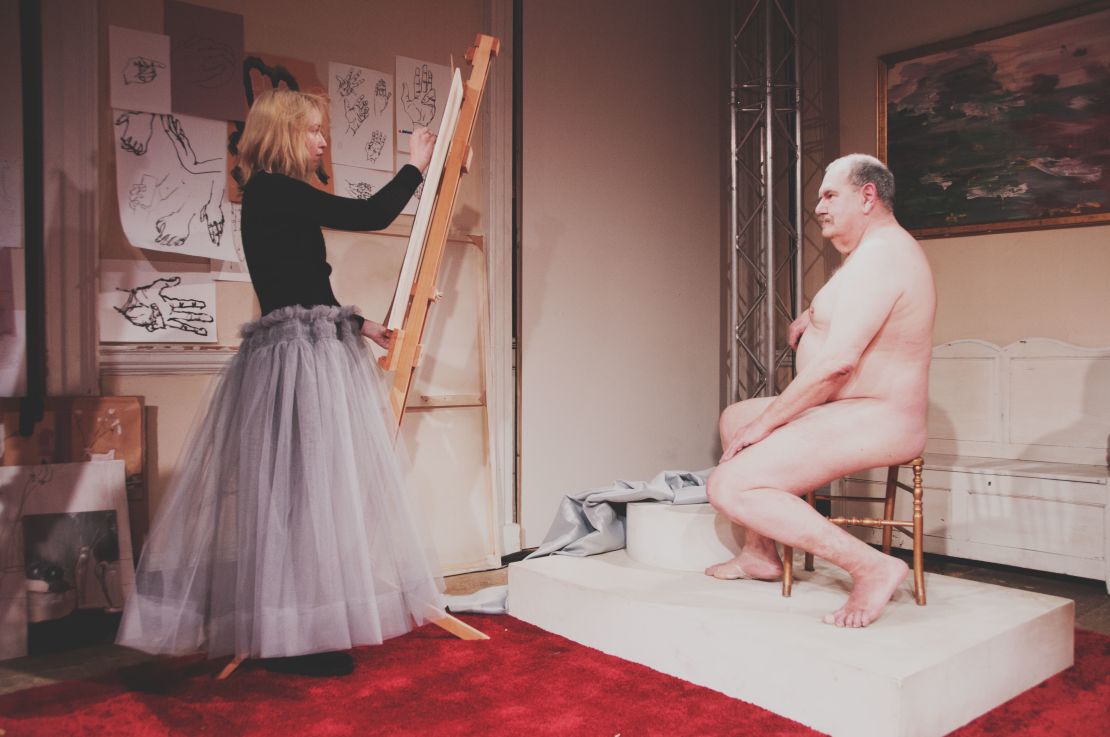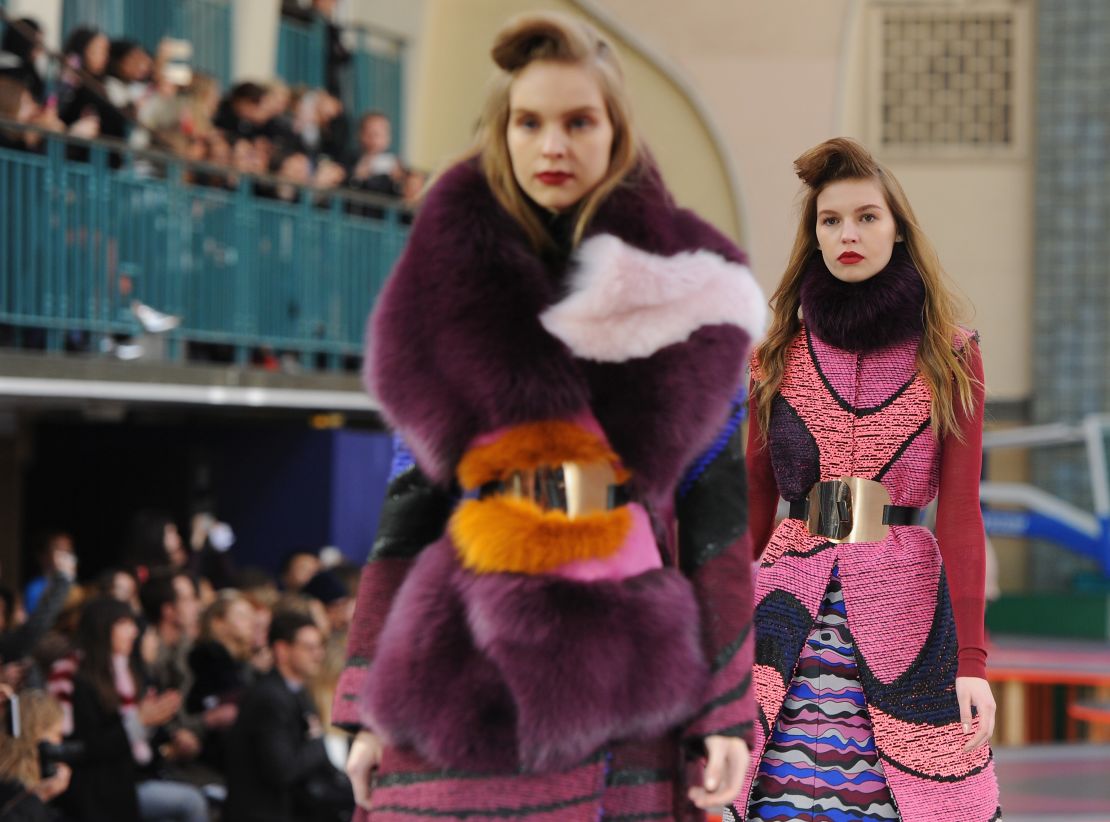On the first night of London Fashion Week, a group of models in diaphanous tulle and taffeta dresses stand behind easels sketching a naked man – consciously posed to preserve modesty – like an art school girl gang. The show space is cramped with crowds snapping pictures, journalists typing reports into iPhones, and curious invitees trying to admire the clothes.
Here and there are editors, bloggers and fashion writers, including Vogue columnist Lynn Yaeger, who is speaking animatedly to Molly Goddard – a designer and presentation puppeteer – about the specifics of the collection. The 26-year-old Goddard, it would seem, is someone worth paying attention to.
As part of this season’s British Fashion Council New Generation (New Gen) cohort, Goddard has been branded as one of Britain’s 10 most exciting young designers to watch, following in the footsteps of Alexander McQueen, Mary Katrantzou, Erdem and Christopher Kane.
Since 1993, the highly competitive New Gen scheme has offered sponsorship, mentoring and promotion to spin young British designers into the type of international brands found in Saks, Vogue, and closets around the world, using its impressive track record as a seal of approval.
Commercializing creativity

According to Caroline Rush, the British Fashion Council’s chief executive and co-chair of the New Gen selection panel , this focus on young designers has been instrumental to London’s status as a style capital and essential part of the fashion calendar.
“The moment they’re selected under that New Gen banner, everyone looks forward to seeing them,” says Rush. “We’ve always had great young designers, and successful brands like Burberry, but (London) was lacking that success in the middle that now attracts international press and attention.”
Naturally, it isn’t all punk-ish prom dresses and male nudity. Also on show this season: tailored minimalism from 1205 designer Paula Gerbase (formerly of Savile Row tailor, Kilgour); silicone-painted denim from Faustine Steinmetz; and salvaged aesthetics at Danielle Romeril, among other looks. What the designers share is “that spark of talent, and that understanding of the brand they’re trying to build.” Season after season, the New Gen selection panel – made up of top journalists, buyers and retailers – gravitates toward applicants who can tailor their creative vision to the market.
“One of the things we always talk about a lot is how to commercialize creativity,” Rush says. “If you base it all on creativity, it’s very exciting in what they’re trying to do, but it’s also about creating a sustainable business.”
To that end, New Gen offers more than just prime billing on the fashion week schedule, and the credibility that comes from having fashion’s elite in your corner. Designers are primed on digital strategy, the logistics of opening a store, accounting, and how to navigate China’s notoriously tricky intellectual property laws.

It’s this element that Roksanda Ilincic, the Serbian-born designer who was first sponsored by the scheme in 2005, appreciates most of all. Ten years on, her colorful palette and feminine silhouettes have been worn by Kate Middleton, Michelle Obama, and countless A-listers; and her collections are sold in more than 40 countries. In 2014, she opened her first standalone store in London and appointed the brand’s first CEO, as part of an ongoing growth strategy.
“Obviously you need to be creative to do it anyway, but one doesn’t work without the other,” she told CNN after her Autumn/Winter 2015 show. “There has to be creativity, but there also has to be a business side, and I think New Gen helped with that.”
The next generation
For Goddard, this is only her second fashion week showing, following a pseudo-prom presentation at a Mayfair church last September, in which she cast her friends as models. She hadn’t originally planned to sell anything (“It was meant to be about getting back out there and doing it for me”), but she changed her mind when buyers from cult-favorite Dover Street Market in New York and London, as well as IT Hong Kong, approached her about orders.
She quickly realized that, if she was going to go into business seriously, she would need a little help, no matter how much people liked her designs. (She’s now stocked in all three shops.)
“Everything happens so quickly and I have so much to learn. I couldn’t do it without their support…There’s a lot more pressure, but I think that’s a good thing,” she says.
Though the fashion week isn’t yet over, Goddard is already musing about staging a proper fashion show next season, excited by the new found attention and the fun she’s had working on presentations. There are still more appointments with press and buyers to think of, but she’s optimistic for herself and her brand, thanks to her developing business acumen and support network.
“It’s just so massively hyped up. I probably couldn’t grow quite as fast if it wasn’t for New Gen,” she says. “It’s like suddenly I’m running a business.”








